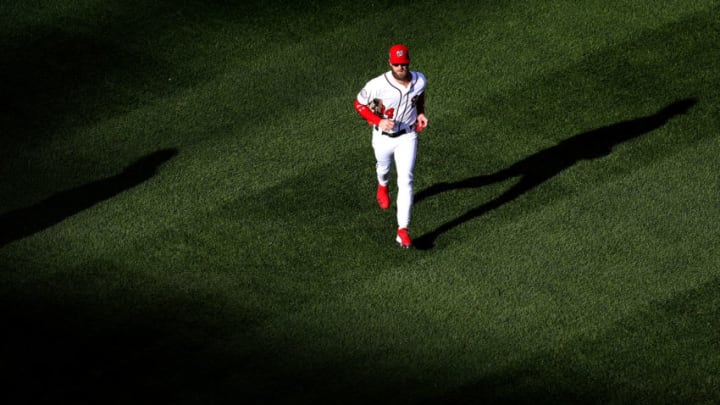Atlanta Braves Morning Chop: the only time I will talk about Bryce Harper

Surplus Contract
Let’s look at the prices of some outfielders available this off-season that we’ve mentioned:
- McCutchen (signed, roughly $17m per year)
- Michael Brantley (signed, $15m per year plus bonus of $2m)
- Gerardo Parra ($10 million in 2018, but OPS+ of just 82)
- Nick Castellanos (scheduled for $11.3 via arbitration; will cost prospects too)
- A.J. Pollock ($7.75m in 2018, but declined $17.9m qualifying offer)
- Nick Markakis ($11m in 2018; should be around $12-14m this season)
So a Bryce Harper contract… say in the $30-33 million range annually… would be kinda like buying two of players listed above…a price premium of roughly $15-19m above the amount that Atlanta will likely have to spend on the position anyway (unless Mitch Haniger suddenly becomes available… and there hasn’t been any chatter whatsoever about his availability).
So the amount of the ‘extra risk’ Atlanta would be absorbing for signing Harper is probably around that $15-19 million… every year for the next decade or so.
One other negotiation ploy: the Nationals have been quite successful in the concept of deferring contract monies to future years… and Scott Boras has been on board with such practices. This could reasonably reduce a ‘today price’ by perhaps 3-to-5 million annually.
There might be other ways to skin this cat. If I’m negotiating for the Braves and felt I had to give him this ‘opt out’ clause, here’s how I’d try to position it:
- Contract years 1-3: $36 million… possibly with deferrals.
- Double opt-out choice after year 3.
- Atlanta gets the right of first refusal at the same $36m rate. In other words, if the Braves wanted, they continue the contract at $36m annually for 10 full years.
- If the team opts out, Harper would have the choice to either stay at $31m annually (for years 4-10) or leave all together.
Don’t focus on the specific numbers; this is strictly for illustrative purposes, but that’s either $108 million for 3 years or either $325m or $360m for 10.
The idea is to front-load the deal to pay him for his (likely) best years and then cut back the dollars to both introduce a shared risk for Harper’s decade 30 years and to encourage him to consider exercising the opt-out clause.
This approach would reduce the Braves’ exposure while also giving them Bryce’s prime years. If he sticks around anyway… well, $31 million in 2025 dollars is still a bit more palatable than a more traditional back-ended deal (see Pujols, Miggy, Tulo, et al).
Even in a bad-case scenario, you’d have to think that Harper’s worst production would be around the 3.0 WAR that he put up in 2016, and if he were to remain more-fully productive, there’s a real chance the Braves might give themselves a decade-long ‘window’ to win.